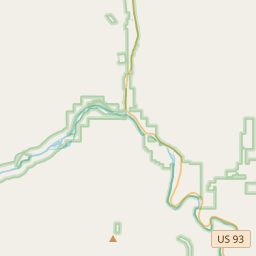Hungry, Wet and Cold
Historical marker location:
North Fork, Idaho
( Marker is on Salmon River Highway (Scenic Route 30) 5 miles west of Lewis and Clark Highway (U.S. 93), on the left when traveling west.)







© OpenStreetMap contributors
In the late 1800s, Idaho experienced a gold rush that attracted thousands of people to the state in search of riches. One of the most famous mining towns was Custer, which was home to more than 15,000 people at its peak but was eventually abandoned after the gold ran out.
About Lemhi County
Lemhi County Timeline
Lemhi County, located in Idaho, has a rich history that dates back thousands of years. The region was originally inhabited by various indigenous tribes, including the Shoshone and Bannock peoples, who relied on the land's abundant natural resources for their sustenance. In the early 1800s, European explorers and fur trappers, such as Lewis and Clark, made their way through this region, establishing contact with the native tribes.
In the mid-19th century, Lemhi County experienced a significant influx of settlers due to the discovery of gold. The Lemhi Valley Gold Rush attracted many prospectors, leading to the establishment of mining camps and towns. Salmon City, later renamed Salmon, became the county seat and a hub of economic activity.
During this time, conflicts between settlers and indigenous peoples arose. The Bannock War of 1878, which spread throughout the region, resulted in the loss of lives and heightened tensions between the two groups. Eventually, a treaty was signed, granting the Lemhi Shoshone a reservation.
Throughout the 20th century, Lemhi County continued to develop and diversify its economy. Agriculture, mining, and timber industries played significant roles. The region also became an attractive destination for outdoor enthusiasts, thanks to its pristine rivers, mountains, and wildlife.
Today, Lemhi County preserves its historical legacy while embracing modern progress. It serves as a gateway to the Frank Church-River of No Return Wilderness and provides countless recreational opportunities. The county's rich history and natural beauty continue to attract visitors and showcase the enduring spirit of the region.
In the mid-19th century, Lemhi County experienced a significant influx of settlers due to the discovery of gold. The Lemhi Valley Gold Rush attracted many prospectors, leading to the establishment of mining camps and towns. Salmon City, later renamed Salmon, became the county seat and a hub of economic activity.
During this time, conflicts between settlers and indigenous peoples arose. The Bannock War of 1878, which spread throughout the region, resulted in the loss of lives and heightened tensions between the two groups. Eventually, a treaty was signed, granting the Lemhi Shoshone a reservation.
Throughout the 20th century, Lemhi County continued to develop and diversify its economy. Agriculture, mining, and timber industries played significant roles. The region also became an attractive destination for outdoor enthusiasts, thanks to its pristine rivers, mountains, and wildlife.
Today, Lemhi County preserves its historical legacy while embracing modern progress. It serves as a gateway to the Frank Church-River of No Return Wilderness and provides countless recreational opportunities. The county's rich history and natural beauty continue to attract visitors and showcase the enduring spirit of the region.
Lemhi County Timeline
This timeline provides a glimpse into the major events and milestones that have shaped the history of Lemhi County, Idaho.
- 1805 - Lewis and Clark Expedition pass through the Lemhi County area
- 1866 - Lemhi City is established as a mining town
- 1879 - Salmon City becomes the county seat of Lemhi County
- 1910 - The Gilmore and Pittsburgh Railroad reaches Salmon City
- 1912 - Salmon National Forest is established
- 1934 - Lemhi Pass is dedicated as a national monument
- 1950 - The completion of the Salmon Dam brings irrigation to the county
- 1972 - Lemhi County Historical Society is founded
- 1990 - The population of Lemhi County reaches its peak at 8,664
- 2000 - Lemhi County celebrates its centennial